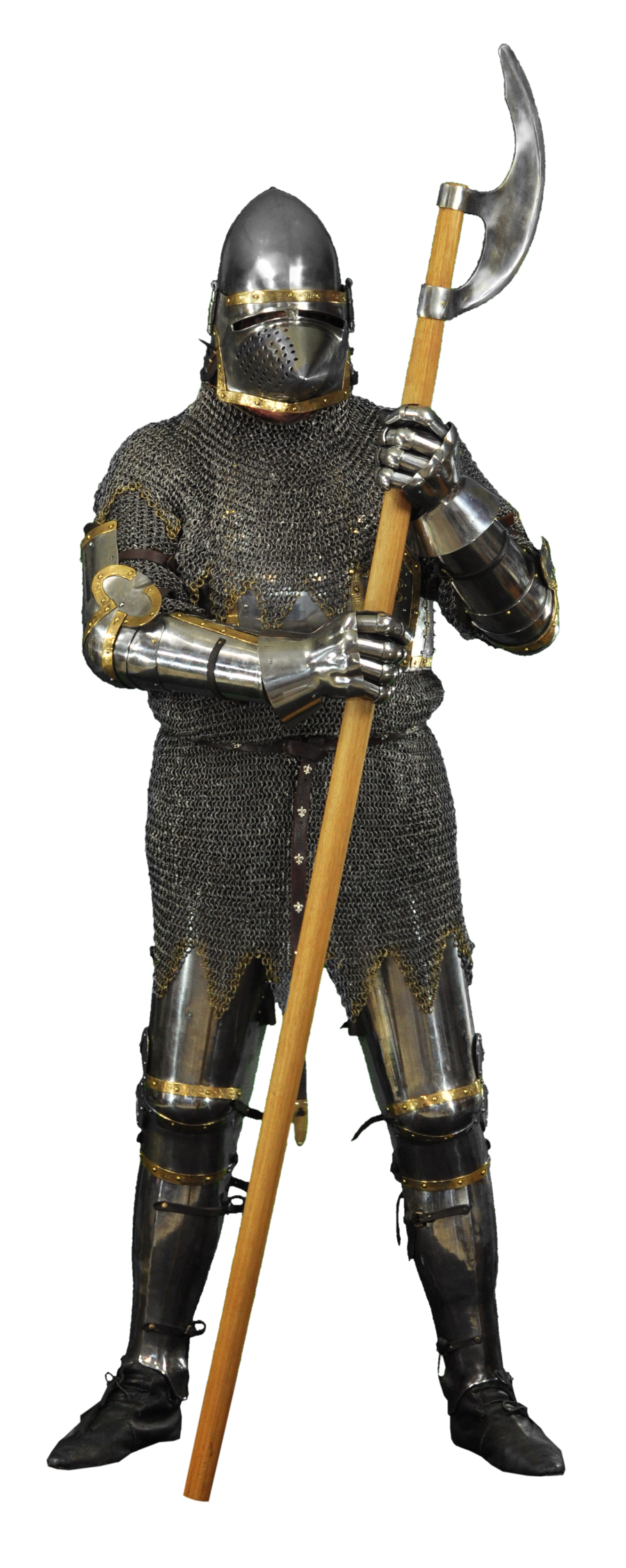
This image has format transparent PNG with resolution 900x2255.
You can download this image in best resolution from this page and use it for design and web design.
Medieval knight PNG with transparent background you can download for free, just click on download button.
A knight is a person granted an honorary title of knighthood by a head of state (including the pope) or representative for service to the monarch, the church or the country, especially in a military capacity.
Knighthood finds origins in the Greek hippeis and hoplite (ἱππεῖς) and Roman eques and centurion of classical antiquity.
In the Early Middle Ages in Europe, knighthood was conferred upon mounted warriors. During the High Middle Ages, knighthood was considered a class of lower nobility. By the Late Middle Ages, the rank had become associated with the ideals of chivalry, a code of conduct for the perfect courtly Christian warrior. Often, a knight was a vassal who served as an elite fighter, a bodyguard or a mercenary for a lord, with payment in the form of land holdings. The lords trusted the knights, who were skilled in battle on horseback. Knighthood in the Middle Ages was closely linked with horsemanship (and especially the joust) from its origins in the 12th century until its final flowering as a fashion among the high nobility in the Duchy of Burgundy in the 15th century. This linkage is reflected in the etymology of chivalry, cavalier and related terms. In that sense, the special prestige accorded to mounted warriors in Christendom finds a parallel in the furusiyya in the Islamic world.
In the Late Middle Ages, new methods of warfare began to render classical knights in armour obsolete, but the titles remained in many countries. Holy Roman Emperor Maximilian I is often referred to as the "last knight" in this regard. The ideals of chivalry were popularized in medieval literature, particularly the literary cycles known as the Matter of France, relating to the legendary companions of Charlemagne and his men-at-arms, the paladins, and the Matter of Britain, relating to the legend of King Arthur and his knights of the Round Table.
Today, a number of orders of knighthood continue to exist in Christian Churches, as well as in several historically Christian countries and their former territories, such as the Roman Catholic Sovereign Military Order of Malta, the Order of the Holy Sepulchre, the Protestant Order of Saint John, as well as the English Order of the Garter, the Swedish Royal Order of the Seraphim, and the Order of St. Olav. There are also dynastic orders like the Order of the Golden Fleece, the Order of the British Empire and the Order of St. George. In modern times these are orders centered around charity and civic service, and are no longer military orders. Each of these orders has its own criteria for eligibility, but knighthood is generally granted by a head of state, monarch, or prelate to selected persons to recognise some meritorious achievement, as in the British honours system, often for service to the Church or country. The modern female equivalent in the English language is Dame.
In this clipart you can download free PNG images: Medieval knight PNG images free download